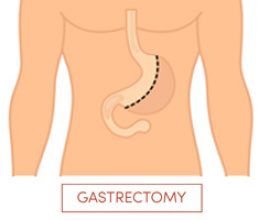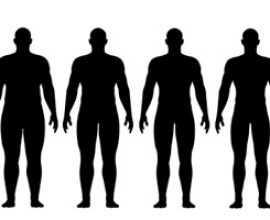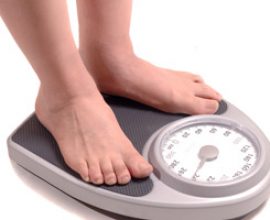How Weight Loss Surgery Helps With Gastric Reflux

Many patients diagnosed with gastric reflux may choose to undergo weight loss surgery to treat the condition. Though it usually isn’t the first or primary treatment option for gastric reflux, when other methods have failed, bariatric surgery may be the right solution.
What Is Gastric Reflux?
Gastroesophageal reflux disease (GERD) occurs when stomach acid flows through the esophagus back into the mouth, irritating the lining of the esophagus. It’s normal to experience acid reflux once in a while, but reflux that occurs multiple times a week is classified as GERD.
Symptoms of GERD include:
- Burning sensation in the chest, typically after eating, that may worsen at night
- Chest pain
- Difficulty swallowing
- Regurgitating food or sour liquid
- Feeling a lump in the throat
Nighttime symptoms of acid reflux may include chronic cough, laryngitis, sleep disruptions, and new or worsening asthma.
Patients who experience severe or frequent GERD symptoms or take over-the-counter heartburn medication more than twice a week should seek medical attention.

Treating Acid Reflux With Weight Loss Surgery
One of the risk factors for GERD is obesity. Excess weight may put pressure on the abdomen, pushing up the stomach and causing acid reflux. Thus weight loss is often a primary goal of treatment. Most patients will experience relief through healthy weight loss, but those who are unable to lose enough weight through diet and exercise may need to undergo weight loss surgery.
What Happens During Sleeve Gastrectomy Surgery?
Sleeve gastrectomy is a form of bariatric surgery that involves the removal of roughly 85 percent of the stomach and sewing the remainder into a sleeve-like shape. Successful surgery heavily limits the number of calories a patient can eat and decreases feelings of hunger which leads to less overeating and greater long-term weight loss.
The patient will be placed under general anesthesia before the procedure can begin. During surgery, the physician will make five small incisions in the abdomen and insert instruments through the incisions to create a narrow sleeve. The stomach is stapled vertically and the larger, curved part of the stomach is removed. The entire procedure is performed laparoscopically and may take one to two hours.
Patients will awaken in a recovery room and be monitored for any potential complications.

What Should Patients Expect After Surgery?
After sleeve gastrectomy, patients will begin a seven-day, sugar-free diet consisting of noncarbonated liquids. They will then progress to pureed foods for three weeks, and finally to regular foods about four weeks after surgery. Patients will need to take a multivitamin twice a day, a calcium supplement once a day, and get a vitamin B-12 injection once a month for the rest of their life.
Patients will undergo frequent medical checkups to monitor their health in the first several months after weight-loss surgery and may need to undergo blood work, laboratory testing, and various exams.
It is normal to experience changes as the body reacts to the rapid weight loss in the first three to six months after sleeve gastrectomy. Patients may experience the following temporary symptoms:
- Body aches
- Feeling tired, as if you have the flu
- Feeling cold
- Dry skin
- Hair thinning and hair loss
- Mood changes
Patients experiencing symptoms of GERD who have not benefited from other treatments should schedule an appointment to find out if they are good candidates for sleeve gastrectomy.
Related Posts
5 Risks of Obesity
How Sleeve Gastrectomy Works
The Advantages of Orbera
Are You a Candidate for Sleeve Surgery?
Contact Info
3420 Bristol St #700, Costa Mesa, CA 92626, USA
Orange Location
1310 W Stewart Dr. Suite 310, Orange, CA 92868, USA





*DISCLAIMER
In compliance with 16 CFR 255 and Federal Trade Commission Guidelines on the use of endorsements and testimonials in the marketing and advertising of websites:
The testimonials, statements, and opinions presented on our website are only applicable to the individuals depicted, and may not be representative of the experience of others. The testimonials are voluntary provided and are not paid, nor were they provided with free products, services, or any benefits in exchange for said statements. The testimonials are not indicative of future results or success of any other individuals. South Coast Specialty Surgery Center cannot and does not guarantee the medical outcome or the results of individuals utilizing the services provided by us or the providers in our network, or from any of the websites we link, or refer to. The testimonials and endorsements found on the site for the benefit of the site or individual services or procedures are, to the best of our knowledge, the true statements and beliefs of the individuals providing them. In short, surgery involves risk, results may vary, and outcomes are not guaranteed.
Some pages of this website may feature a depiction of a model showing emphasis of the torso.
Product names may be mentioned in testimonials or elsewhere, and are trademarks or registered trademarks of their respective holders. Please refer to our Terms and Risks of Surgery pages for more information. Gastric Sleeve Surgery Centers performs Gastric Sleeve Surgery in Orange County, San Diego, Los Angeles, Riverside County and other location in Southern
California.




